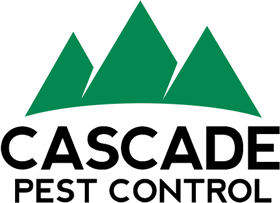Author: Kurt Treftz, Cascade Pest Control
Integrated Pest Management (IPM) is a sustainable approach to pest management that moves along a continuum by assessing all available techniques (biological, cultural, physical, chemical) and combining them with the least impact to economic, health, and environmental factors.
Wherever pests are found, Integrated Pest Management can be at work. IPM recognizes that pests are any organism (both plants and animals) that pose a risk to health, environment, economy, or even aesthetics. So, there are organisms that could be considered a pest in one context but not in another.
By studying the life cycles of pests and their environment, professionals are able to use the best, most current methods to manage pests in a cost efficient, environmentally friendly way. Integrated Pest Management uses a vast array of sources from the latest in biology to historical trends and technological advances to manage pests by
- Accessing and preventing unacceptable levels of pest damage
- Minimizing the impact on people, property, & the environment
- Reducing pest resistances to pesticides and other management practices
Since IPM is on a continuum, these practices focus on the least invasive, least harmful, least aggressive strategies first and move along to stronger strategies as the situation warrants. For example, pest management might begin by planting naturally repellant plants to reduce pest impact but might need to move to a chemical pesticide if the infestation doesn’t respond.
Principles of Integrated Pest Management
- Acceptable levels – The emphasis of Integrated Pest Management is on control, not eradication. Wiping out whole populations is neither feasible, nor recommended. IPM helps to identify the acceptable pest levels within an environment.
- Preventive cultural practices – Planting for local growing conditions and plant health is an example of a cultural practice as is learning how to reduce invasive species, sanitize crops and equipment, etc.
- Monitoring – Inspecting and identifying are two huge aspects of monitoring. It is vital to stay vigilant for pests. Inspecting requires regular observation and record-keeping to stay up with life cycle and reproductive cycles. Identification is necessary to apply best practices to the situation.
- Mechanical controls – When unacceptable levels are reached, mechanical controls are the first pest management options. Mechanical means include things like pruning/hand-picking, barriers, traps, vacuuming, and tillage to eliminate affected areas and disrupt breeding.
- Biological controls – Next, biological controls can come into play. IPM starts with natural processes and materials that can control pests at a lower cost and environmental impact. Beneficial insects & naturally occurring insecticides are some examples.
- Responsible use – Finally, synthetic and chemical pesticides may be required. However, responsible use governs their use. Things to consider include the life cycle of the pest (applied when it can do the most to disrupt the infestation), directed application (targets the pest you want without residual impact), low-volume spray to cut down on excess cost due to overspray, and limited use to prevent resistance.
Steps of Integrated Pest Management
So, what might Integrated Pest Management look like? By studying all the available data IPM professionals have a toolbox of techniques like altering surroundings, adding beneficial organisms, growing resistance plants, disrupting the life-cycle of the pest, preventing the pest problem from developing, and using pesticides.
- Identify / Monitor: First, you must determine what is causing the problem and how big the problem is. Is it something that requires immediate action or should it be monitored until unacceptable levels are reached?
- Evaluate: Results of identifying and monitoring can help to answer pertinent questions like is the pest causing damage? Do we need to act now?
- Prevent: Some pest problems can be resolved with simple means like sealing cracks, cleaning up debris, and planting resistant and repellent plants.
- Act: If the infestation is approaching damaging levels, then IPM has multiple tools to bring pests back below the economically damaging threshold. Using a variety of tools can help increase the likelihood of success and prevent pest resistance to any one method. Applying pesticides at strategic times, rotating the use of any one class of pesticides, rotating crops, and more can be used to control pests.
- Monitor: Keeping an eye on the effectiveness of treatment can prevent the overuse of pesticides, ensure that the most appropriate tool is being used, and affirm a change if one becomes ineffective. Once pest levels decrease, monitoring continues to be an important step to prevent re-infestations.
Practitioners of Integrated Pest Management
Everyone!!! From simple to complex, Integrated Pest Management principles can be used in all sorts of situations.
- Farms – Much of Integrated Pest Management began with agriculture. From something as simple as rotating crops to the latest in pesticides and sympathetic plantings, IPM is used extensively in this realm.
- Managed Natural Systems – Federal workers use IPM in the management of national parks and wilderness areas. IPM works on a large scale as well.
- Buildings and Homes – You can be part of the solution as well. Residents and business owners can do their part to practice the principles of Integrated Pest Management. And hire professionals who practice it as well.
Cascade Pest Control has long supported and practiced management techniques that respect our environment and use the least aggressive practices to ensure results. Give them a call 888-989-8979 today for all your pest control needs.
